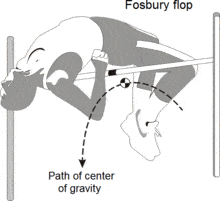Motivation For Hacking Biomechanics
The motivation behind hacking biomechanics is to find ways to use the body’s motion and positioning to complete tasks in the most efficient and optimal way possible. This falls under the field of biohacking because we are thinking laterally about the human body’s natural and established systems and processes.
The reach of biomechanical hacks applies to everyone who has a body with some level of motion capability. More efficient movement can help everyone from elite level athletes, to people with physical disability and everyone in between.
There are two ends of the spectrum of benefits to biomechanic hacking. One end is that you can make life easier, less uncomfortable, or pain free for yourself. The other is that you can increase productivity, performance and skill level by studying and improving any given movement or action in work, sports, or every day life.
Upgrade Movie
The 2018 movie “Upgrade”, with the protagonist played by actor Logan Marshall-Green, is a futuristic science fiction take on highly advanced biohacking.
The story’s premise is that the main character becomes fully paralyzed in an “arranged” accident, but receives a chip implant that restores his mobility and can control his body for him. He then goes on a biologically augmented lethal rampage in order to avenge his wife’s murder.
It is quite a violent movie, but that is not the point I want to highlight in talking about it. The scenes in which the character moves with efficiency and purpose are worthy of note in this article.
While there is a lot of movie studio camera trickery involved in the action scenes, Logan Marshall-Green does an outstanding job in portraying this biohacked individual who suddenly finds himself able to move and fight with uncompromising efficiency. The moves are executed in such a way that a computer might carry them out if it had control of the human body. This is done convincingly by the actor.
It’s fair to say that a lot of practice and choreography went into the creation of these highly entertaining scenes, but the question is left open: can the type of efficient movement that we see in the movie be applied in other areas? Can we apply this to hacking biomechanics?
While in the story, the action is performed by a biological implant, in reality, the actor is making it all look real without actually having any such kind of implant. At least I think that is fair to assume.
Do Easy
Do Easy is a discipline brought into view by the author William S. Burroughs some time during or after the “Beat” movement of the 1960’s. To summarize, it is a way of living and performing actions the best that can be done by doing them in the most relaxed and “easy” way possible.
I include this here because I find the Do Easy philosophy a useful framework for developing biomechanical hacks. One of its core tenets states that the point of doing things is not to get them done, but to do them well. It includes the very simplest of actions, such as putting down a cup of coffee. In this example, your goal would be to place the coffee down perfectly, without a rattle, without spilling a drop. You would work out the easiest, best way you can do it and practice until it becomes second nature.
It is another example of hacking biomechanics.
Students of Do Easy apply the principal to everything that they do on a regular basis. Extremely high levels of skill can be developed from the most mundane of tasks, such as tossing paper into a wastebasket. A practitioner will eventually be able to hit the wastebasket every time without even looking.
Robotic Movement
Our focus in this article is non-invasive biohacking of the human body’s mechanical system. With this in mind, in this case we are not interested in body augmentations such as chip implants or cyborg-esque joinings of human and machine.
This is hacking biomechanics.
There is however something to be learned from the way in which we program machines to perform movements, tasks and actions. Take for example a robot arm in a car factory that welds a door panel to its frame. Due largely to economics, this robot arm will be made to move in the most efficient way possible. Thousands of study hours and terabytes of computations will have gone into perfecting this motion.
Not welding car doors, but you can see how these robot arms move while sorting chocolates with hyper-efficiency. We can observe how these robots are functioning and emulate their speed and precision in our own tasks.
The last point I want to make about robotic movement is that every step is first broken down and determined in order to complete the whole movement. So the sequence will go something like:
- Move above chocolate.
- Scan for type.
- If correct type, drop down to chocolate.
- Open clasp.
- Contact chocolate.
- Close clasp.
- Lift chocolate.
- Move to position.
- Lower chocolate.
- Open clasp.
- Lift arm.
Of course there is more involved than this, but I mean to provide a general outline. We can adopt this approach for the frequent actions we take every day.
Repetition/optimization
Once you have identified a task or action that you would like to perfect, you can begin to analyse how you are currently doing it by breaking it down into steps (as in the robotic arm example).
In studying the individual steps, as well as the action as a whole, you will be able to hone in on areas that can be improved. You might even discover a completely different way to complete a sequence that vastly outperforms the previous method. We will look at a famous example of this a bit further on.
The Do Easy method of repeating an action to the point of perfection comes strongly into play. You should be mindful of every step and aware of where improvements can be made. This is the way to optimize action through repetition.
Computer programs
The process of hacking biomechanics can be likened to writing a computer program. You begin with an end result in mind; the actual function of the program. The program in this case would be the desired action. One such example could be popping up to your feet on a surfboard.
Once the steps to complete the program have been broken down, you can then apply “hacks” to any or all of the steps in order to improve technique or accelerate learning. For example, you might find that you were dragging your knee along the deck of the board as you pulled up your front leg, slowing you down. So you lift your leg higher.
In a computer program analogy, you might see that you are copying a bunch of data when you only needed to reference it, slowing your program down.
Case study example: The Fosbury Flop.
I consider this to be one of the greatest hacks of human biomechanics ever.
American athlete Dick Fosbury had tried many different athletic disciplines, but never really stood out in any of them. He took up high jump as his next challenge and found that approaching the bar in the opposite manner to what was the accepted norm of the time, greatly boosted his performance.
He figured out that by going over the bar backwards and arching his body at the exact right moment, he was able to keep his center of mass actually underneath the height of the bar. This method allowed his body to achieve a greater reach of height with the same amount of effort as the older techniques.

The technique was so revolutionary in athletics that it allowed Dick Fosbury to win an Olympic gold medal, and is now the standard used by all elite level high jumpers worldwide.
Conclusion
I hope it is clear that by thinking of body movements in new and lateral ways, we are able to find ease and grace in otherwise mundane or difficult tasks.
You may be inspired to take action on this yourself. I personally use robotic movement for such tasks as emptying out the dishwasher or tidying up my desk, much to the chagrin of my wife. I find that the tasks get done quickly and effectively and feel more like a performance than a chore. If there is a demand for such a thing, I may well post a video of myself carrying out these tasks in my robotic way.
Hacking biomechanics could be summed up as finding new and better ways to do familiar things.
Get the free ebook now

